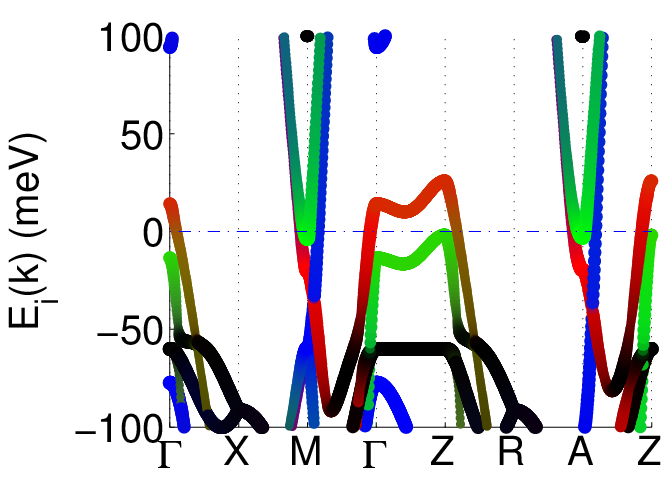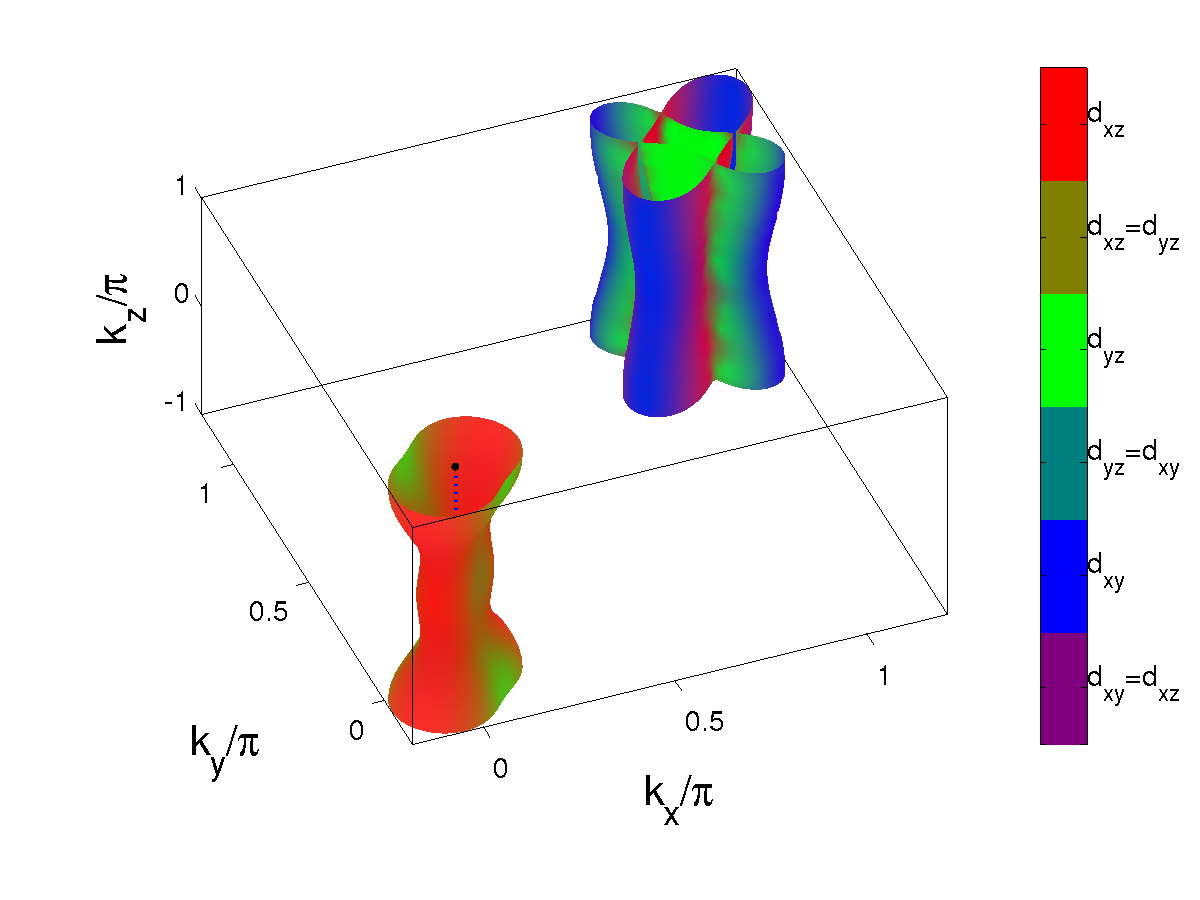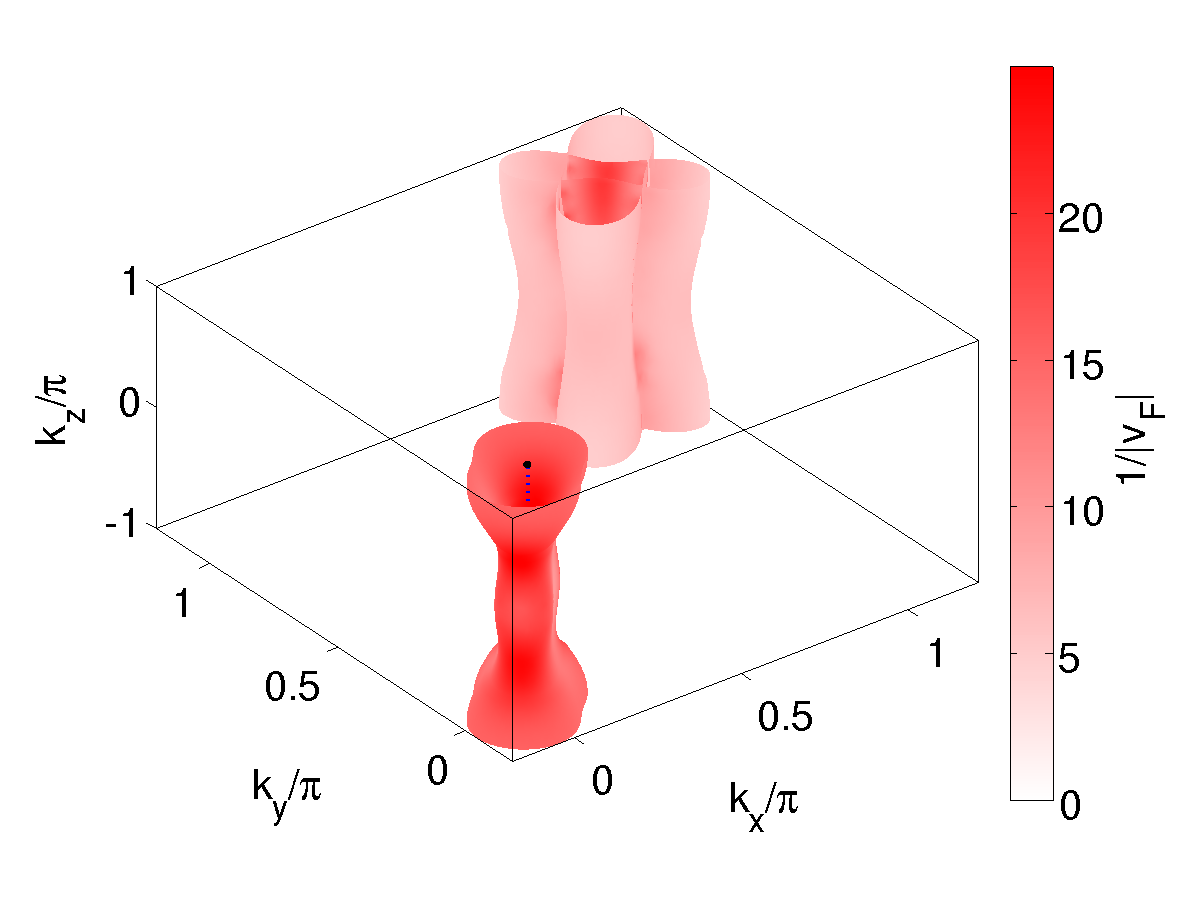|
|
Zur Navigationshilfe
BO /contentBottomTemplate
Tight binding models for high temperature superconductors
This page lists a set of tight-binding models that are suitable to describe high temperature superconductors
Some of the models have been compiled from the literature for comparison, others are calculated using first principles calculations or adjusted to match experimental measured quantities.
For each model, the hopping parameters are given in a comma separated file (csv), and basic plots of the band structure and Fermi surface are provided for comparison.
The tight-binding file contains lines with the following format:
rx, ry, rz, a, b, Re(t), Im(t)
Here ri is the i-th component of the real space vector that describes the hopping process, a and b are integer numbers labeling the orbitals and the last two entries are the real and imaginary part of the hopping (usually given in eV).
The corresponding Bloch Hamiltonian (in orbital representation) can be obtained by a Fourier transform and summation over all lines to yield the matrix Hab.
|
Models
|
|
10 band model for FeSe matching the eigenenergies as measured within BQPI (Sprau et al.) and consistent with ARPES measurements (Watson et al.) of the Fermi surface, and consistent with measurements of estimated areas of Fermi surface cuts via quantum oscillations (Terashima et al.).
The spin orbit coupling in this model is not encoded in the tight binding file, but included via the standart matrix elements as described in
Andreas Kreisel, Yan Wang, Thomas A. Maier, Peter J. Hirschfeld, Douglas J. Scalapino
Phys. Rev. B 88, 094522 (2013)
Spin fluctuations and superconductivity in KxFe2-ySe2
If you use the data provided here, please cite the original work that published the tight binding parameters:
|
Peter O. Sprau, Andrey Kostin, Andreas Kreisel, Anna E. Böhmer, Valentin Taufour, Paul C. Canfield, Shantanu Mukherjee, Peter J. Hirschfeld, Brian M. Andersen, J.C. Séamus Davis
Science, 357, 75 (2017)
Discovery of Orbital-Selective Cooper Pairing in FeSe
A. Kreisel, Brian M. Andersen, Peter O. Sprau, Andrey Kostin, J.C. Séamus Davis, P. J. Hirschfeld
Phys. Rev. B 95, 174504 (2017)
Orbital selective pairing and gap structures of iron-based superconductors

Plot of the eigenenergies of the tight-binding parametrization along high symmetry directions of the Brillouin zone. The fat band scheme displays the weight of the dominating orbital in the wavefunction (thickness) and visualizes the character of the wavefunction (color).
The color scheme is: blue dxy, red dxz, green dyz, black other orbitals.
|

Fermi surface of the 10 band model including spin-orbit coupling (only the z-component).
|

Inverse Fermi velocity calculated from the tight binding model.
|
|